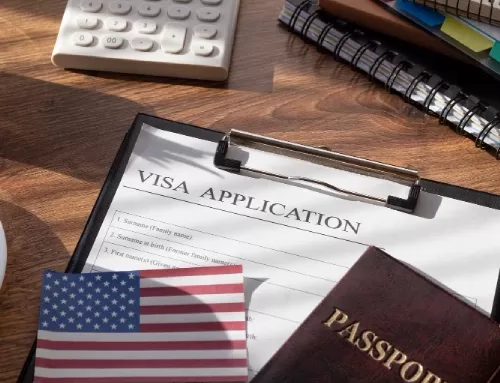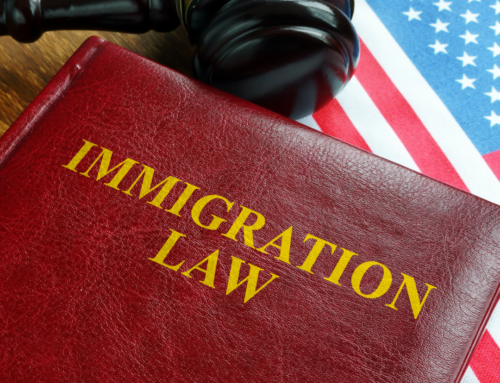Planning for Fall Employment
As summer winds down, many industries prepare for the busy fall season. For sectors like agriculture, hospitality, and tourism, the demand for seasonal workers increases, making this a critical time for employers and employees. For those who rely on seasonal employment, understanding the visa options available and planning is essential for a smooth transition into the fall work season. This article will explore the various visa options available for seasonal workers in the United States and provide tips for planning to secure employment this fall.
Understanding Seasonal Work and Its Importance
Seasonal work plays a vital role in the U.S. economy, particularly in industries that see fluctuations in labor needs throughout the year. For example, the agricultural sector often requires additional labor during harvest seasons, while the tourism industry sees increased holiday demand. Foreign employees who come to the U.S. on temporary visas usually fill these jobs, providing essential labor that helps keep these industries running smoothly.
For workers, seasonal employment offers opportunities to earn income, gain experience, and contribute to the U.S. economy. However, securing seasonal work in the U.S. requires navigating the visa application process, which can be complex and time-sensitive.
Key Visa Options for Seasonal Workers
Several visa categories are commonly used by seasonal workers in the U.S. Each has its own eligibility requirements, application process, and limitations. Below are the most common visa options for those seeking seasonal employment:
1. H-2A Visa (Temporary Agricultural Workers)
– The H-2A visa is specifically designed for foreign nationals who wish to work in the U.S. agricultural sector temporarily or temporarily. Employers must demonstrate that there needs to be more U.S. workers able and qualified to do the work and that the employment of H-2A workers will not negatively affect the working conditions or wages of U.S. workers in similar positions.
Key Points:
– Valid for up to one year, with the possibility of extension.
– Workers can only work for the employer who sponsored their visa.
– Employers are required to provide housing, transportation, and other necessities.
2. H-2B Visa (Temporary Non-Agricultural Workers)
– The H-2B visa is designed for temporary non-agricultural workers, making it ideal for hospitality, construction, landscaping, and tourism industries. Like the H-2A visa, employers must demonstrate that there needs to be more U.S. workers to fill the positions and that hiring a foreign worker will not bring a negative impact to U.S. workers.
– Key Points:
– Typically valid for up to nine months, with possible extensions.
– Annual cap of 66,000 visas.
– Employers must prove the temporary nature of the job, such as a one-time need, a peak load, or a seasonal requirement.
3. J-1 Visa (Exchange Visitor Program)
– The J-1 visa allows foreign nationals to participate in exchange programs in the U.S., including those for seasonal work. Programs such as the Summer Work Travel program fall under this category, allowing students to work in the U.S. during their summer breaks. This visa is often used in industries like hospitality and tourism.
– Key Points:
– Duration varies depending on the specific program.
– Participants must often return to their home country for two years after the program ends before they can apply for another U.S. visa.
Planning Ahead: Tips for a Successful Fall Season
Securing seasonal employment in the U.S. requires careful planning, especially regarding the visa application process. Here are some tips to help you plan and increase your chances of securing a seasonal job this fall:
1. Start Early
– The visa application process can take several months, so getting an early start is essential. Research the visa options available to you and gather the necessary documentation as soon as possible.
2. Choose the Right Visa
– Apply for the visa that best suits your intended employment. If you’re unsure which visa is correct, contact an experienced immigration attorney.
3. Work with a Reputable Employer
– Ensure that the employer you plan to work for is reputable and has a good track record of sponsoring foreign workers. Employers must meet certain obligations, such as providing fair wages and safe working conditions, so working with someone you can trust is essential.
4. Prepare for the Interview
– If your visa application requires an interview, prepare thoroughly. Be ready to explain your reasons for seeking seasonal work in the U.S.
5. Stay Informed About Policy Changes
– Immigration policies can change, and staying informed about updates affecting your visa application is essential. Keeping up with news from the U.S. Department of State or consulting with an immigration expert can help you stay on top of any changes.
Start the Process Early
Seasonal employment offers valuable opportunities for workers and plays an integral part in the U.S. economy. By understanding the visa options available and planning, you can increase your chances of securing seasonal work in the U.S. this fall. Whether considering an H-2A, H-2B, or J-1 visa, starting the process early and preparing will help ensure a smooth and successful experience. Do you have more questions? Call Rivera Law today! We can assist you in Florida & Georgia. Contact our Florida office at (561) 651-9322 OR Contact our Georgia office at (770) 884-8400. Click here to visit our website.





